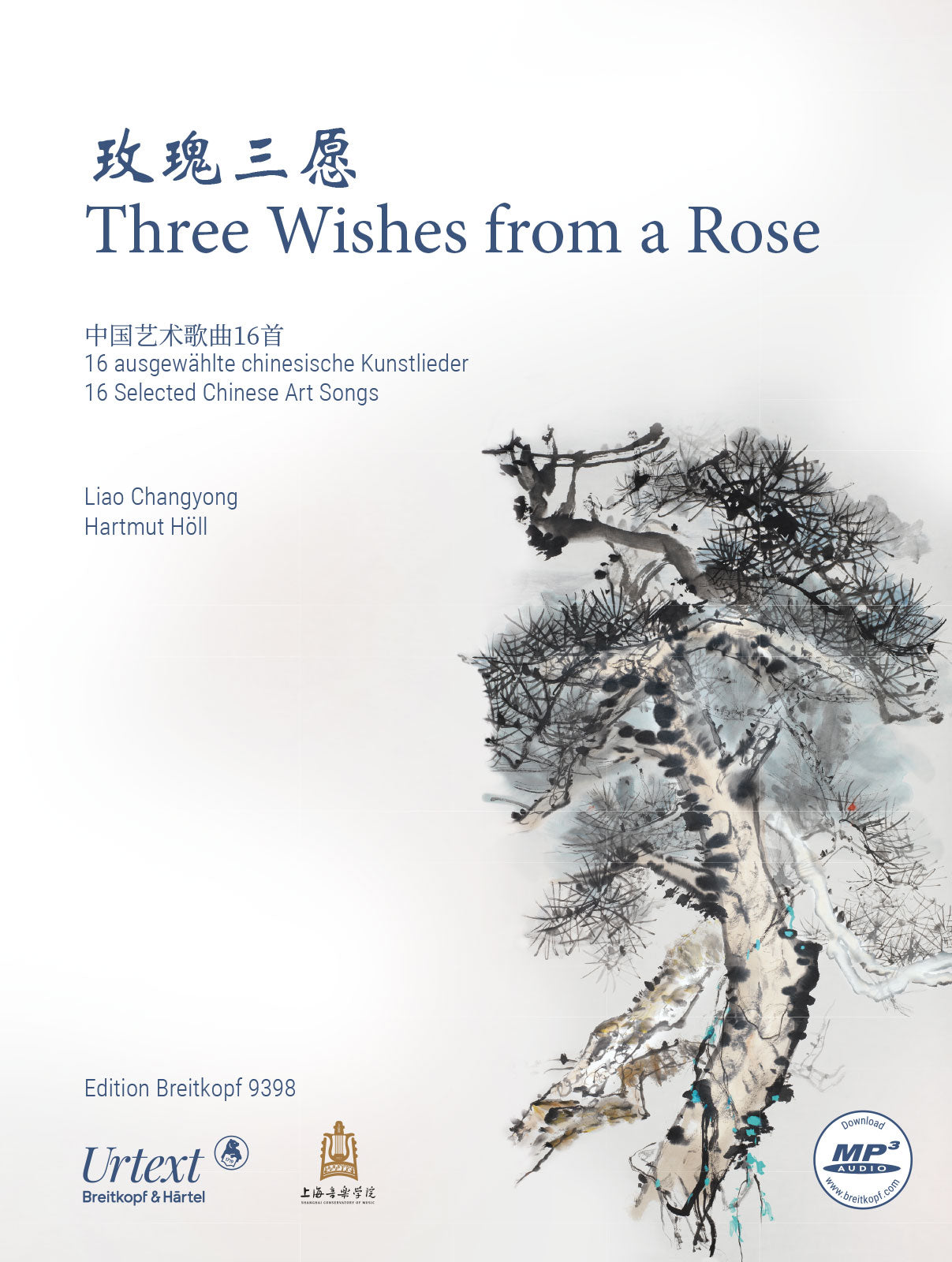3 Wishes from a Rose (16 Selected Chinese Art Songs)
In stock and typically ships within 1 business day.
- Composers: Qing Zhu, Tzu Huang (1904-1938), Xue'an Liu (1905-1985), Tianhe Chen, Wei Wang (699-759), Yinghai Li (1927-2007), Zaiyi Lu, Jiping Zhao, Peidong Xu, Yue Su, Zhou Yi
- Editors: Liao Changyong, Hartmut Höll
- Instrumentation: Piano, Medium Voice
- Work Languages: Chinese, IPA
- ISMN:
- Size: 9.1 x 12.0 inches
- Pages: 80
- Urtext / Critical Edition
Description
The legacy of Chinese poetry includes thousands of songs and poems spanning over more than three millennia. Gustav Mahler himself was inspired by seven of these poems for his Lied von der Erde. The 16 Selected Chinese Art Songs presented here are shaped in structure and musical grammar by the famous European Lied compositions and yet the Chinese idiom is unmistakable. The songs represent poetry from a thousand years, set into music by composers of the 20th century.
Works:
- Zhu: The Great River Goes East (大江东去)
- Zhu: The End of Yangtze River (我住长江头)
- Huang: Three Wishes from a Rose (玫瑰三愿)
- Huang: Spring Nostalgia (春思曲)
- Huang: Winter Plum Blossom (踏雪寻梅)
- Huang: Ascending the Tower (点绛唇·赋登楼)
- Liu: Red Love Beans (红豆词)
- Chen: Whither Spring (春归何处)
- Wang: Farewell (阳关三叠 |)
- Li: Maple Bridge (枫桥夜泊)
- Lu: Song of the Moon (水调歌头·明月几时有)
- Zhao: Ode to the Orchid (幽兰操)
- Zhao: Home Nostalgia (双调·新水令)
- Xu: Moon over Mount Heng (忆秦娥·恒山月)
- Su: Moonlight Chamber (月满西楼)
- Zhou Yi: Phoenix Hairpin (钗头凤)
Publishers use a lot of words to describe what they sell, and we know it can be confusing. We've tried to be as clear as possible to make sure you get exactly what you are looking for. Below are descriptions of the terms that we use to describe the various formats that music often comes in.
Choral Score
A score for vocalists that only contains the vocal lines. The instrumental parts are not there for reference. Generally, cheaper than a vocal score and requires multiple copies for purchase.
Facsimile
Reproductions of the original hand-written scores from the composer.
Full Score
For ensemble music, this indicates that the edition contains all parts on a single system (there are not separate parts for each player). In larger ensembles, this is for the conductor.
Hardcover
Hardbound. Generally either linen-covered or half-leather.
Orchestral Parts
Similar to a wind set, this is a collection of parts. In the case of strings, the numbers listed are the number of copies included, though generally these are available individually (often with minimum quantities required).
Paperback
When publishers offer multiple bindings (e.g. hardcover) or study scores, this is the "standard" version. If you're planning to play the music, this is probably what you want.
Performance / Playing Score
A score of the music containing all parts on one system, intended for players to share. There are not separate parts for each player.
Set of Parts
For ensemble music, this indicates that there are separate individual parts for each player.
Solo Part with Piano Reduction
For solo pieces with orchestra, this is a version that contains a piano reduction of the orchestra parts. For piano pieces, two copies are typically needed for performance.
Study Score
A small (think choral size) copy of the complete score meant for studying, and not playing. They make great add-ons when learning concertos and small chamber works.
Vocal Score
A score prepared for vocalists that includes the piano/organ part or a reduction of the instrumental parts.
Wind Set
For orchestral music, this is a collection of wind and percussion parts. The specific quantities of each instrument are notated.
With Audio
In addition to the printed music, the edition contains recordings of the pieces. This may be an included CD, or access to files on the internet.
With / Without Fingering (Markings)
Some publishers prepare two copies - a pure Urtext edition that includes no fingering (or bowing) suggestions and a lightly edited version that includes a minimal number of editorial markings.



